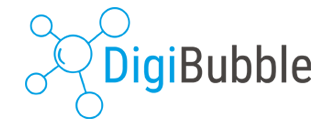SEO Jargon Buster
Too much terminology for today?
Impress your friends and family with the vast aray of SEO jargon now at your desposal. We appreciate that a lot of the terminilogy used online can be baffling. Here is a quick list of the key SEO terms that your are likely to encounter.
When a search engine like google crawls a page it tries to associate the content with the keywords found on it. Better the keyword and content more likely to rank up further on google.
this is the amount of times a keyword appears on a page. While it is good to have some keywords included in your page content, don’t go overboard on keyword density as it will have a negative impact.
This is the phrase that often shows up in the search results. It gives a small summary of what each page is about.
This is an incoming link to your website. When a website links to another, the site has been linked to a backlink from the original one.
This can be viewed in Google Analytics and shows the percentage of visitors that leave a page without clicking through to the rest of your site. If user is on page for less than 3 seconds this will add to the bounce rate.
Also described as a spider sometimes, this moves through the pages of your site to index them for the search engines. Once you index your website to google it will send a crawler to check it.
The number of times an ad or page has been shown whether clicked on or not. Simply, how many times your page or ad has been viewed.
If the URL of a page changes or moves, this re-direct will ensure that links to the old page are re-directed to the new one. This helps search engines find the correct destination for a change of domain.
This can happen if a URL is typed in incorrectly or if page has been removed. It means that the page is not found. If you move a page or change domain don’t forget to set up a 301 redirect to stop your users from seeing this error.
Alternative text used to describe an image. This shows up when a picture can’t be downloaded or viewed and is also used by search engines to check quality of content.
This is a phrase that is commonly used for images or content that contains a clickable hyperlink.
This is a way for webmasters to tell search engines not to follow links on this page, or not to follow this specific link.
This is a code entered to tell crawlers to avoid indexing the given web page. It may be used for large databases, printer or mobile friendly versions of webpages, or pages you want to keep more private.
SEO strategies are used away from the site itself. Encouraging well-known and trusted sites to link to you, perhaps using social media.
SEO practises are undertaken on the website itself to improve its search engine position. These are important steps to take, ensure your website contains, detailed, original and regularly updated content on your site.
This is a link analysis which shows how relevant Google think a page is in relation to a given search term from a user. Better use of keywords and content higher you will rank.
Search Engine Results Page. This is the listing of web pages returned to a user, based on the search term they used.
A sitemap is a list of web pages accessible to crawlers and visitors. An XML sitemap is a structured format intended for a search engine, whereas a HTML sitemap helps users find content on the website. Googles algorithm likes it when you submit a sitemap to be indexed.
